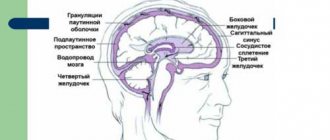Stuttering is a serious problem that impairs the quality of life. In the process of speaking, a person may experience difficulties that are expressed in the periodic repetition of individual sounds, syllables or in spasms in the muscles of the articulatory, respiratory or vocal parts of the speech apparatus. In 99% of cases, this problem appears in preschool age and requires urgent help, because... only at the very beginning of its occurrence, stuttering is only a speech problem. The longer the stuttering experience, the more symptoms it appears (these are logophobia, tricks, obsessive thoughts, etc.). Therefore, the sooner parents turn to specialists, the faster and easier it is to return the child to “speech health.”
They try to treat stuttering in different ways: this includes the help of a psychologist, speech therapy techniques, and complex medication regimens. And in fact, each of them can bring a temporary improvement in speech, but not always and not for long. To help a child (or adult) fully cope with a problem, you need a comprehensive impact on all aspects of a person’s speech and emotional state.
Causes of stuttering
Stuttering is a disorder provoked by psychological and physical factors. The medical name for this speech problem is logoneurosis; it is studied by both medical workers and psychologists, grouped into groups.
Biological prerequisites (heredity)
It is noted that if the mother or father suffered from stuttering, then the child’s chance of developing logoneurosis from early childhood increases. Also, this speech disorder can be transmitted through generations if the grandparents had mild or complicated stages of the pathology.
Physiology
In most cases, somatics influences:
- the brain is functionally affected;
- there were head injuries while in the womb;
- past infectious disease;
- disorder of the autonomic nervous system, etc.
In addition, stuttering is provoked by general physical or nervous exhaustion, a weakened immune system, defects in the formation of the speech apparatus, insufficient development of motor skills, etc.
Social influence
The social factor influencing a person disturbs and changes the general internal and external state. Children suffer from disturbances in the functioning of the speech apparatus due to communication problems:
- quarrels and misunderstandings in the family;
- any aspects of education are not covered;
- do not find a common language with their peers.
Psychology
Children and adults are susceptible to psychological factors that influence their future interactions with others. Logoneurosis can develop due to:
- psychological trauma;
- acute emotional experiences (they can be both positive and negative);
- severe fear;
- psychological fatigue;
- information exhaustion;
- stressful situations, etc.
These factors depend on the person; not all life circumstances can lead to disorders and problems. If you set your priorities correctly and cope with psychological barriers, then speech disorders can certainly be avoided.
Those who stutter are most often withdrawn, which prevents them from correcting and restoring correct speech skills. Logoneurosis, which arose due to psychological reasons, is treated faster and easier.
First, the prerequisites for the onset of the problem are examined, and then a comprehensive treatment method is prescribed. Logoneurosis must not only be eliminated physiologically, the psychological causes of stuttering must be eradicated so that in the future they do not again contribute to the development of pathology.
Statistics
Logoneurosis is considered a problem that arises more often in childhood than in adulthood. According to statistics, around one to three percent of children worldwide stutter. These statistics vary depending on location, age, and nationality.
Boys are four times more likely to develop a stutter than girls. Many people do not know what logoneurosis is and whether they have it, since the pathology can manifest itself in a milder form.
It has been proven that stuttering in adults, which they suffer from since childhood, is much more common in people who grew up in orphanages and boarding schools. It is obvious that early separation from parents and an unfavorable social climate affect the further psychological state and development of a person.
Also, people living in villages and towns are less susceptible to speech defects than those living in a metropolis. This is due to the calm environment. Adults who stutter account for only 1% of the population, which indicates the successful treatment of this pathology.
Siblings adopt this disorder in 18% of cases. Moreover, stuttering occurs in 32% of dizygotic twins, and in 77% of monozygotic twins.
Medicines
Photo: rethinkbreastcancer.com
The use of medications helps eliminate the symptoms of stuttering and also helps improve the psychological state of the child.
Among anxiolytics, a drug such as Tenoten for children has proven itself well. This is an anti-anxiety, sedative drug that is used in children with increased excitability and attention problems. The drug can be prescribed to children from 3 years of age. Helps improve the child's behavior, facilitates the process of adaptation in the children's team, does not cause drowsiness, lethargy or addiction.
Taking sedatives (sedatives) helps to cope with difficult stressful situations. Preference is given to drugs based on natural herbs in order to minimize the systemic effect of chemicals on the body, thereby reducing the risk of side effects. For example, a well-known drug based on valerian is valevigran. This drug is used for mental and physical stress, anxiety, which is accompanied by increased fatigue, inattention, and mild forms of sleep disturbance. It has a calming and mild hypnotic effect, does not cause addiction and does not inhibit psychomotor function.
Anticonvulsants include Epileptal. The purpose of this drug is aimed at eliminating spasms of the facial muscles of the face and hands, which are detected in a neurosis-like form of stuttering. Currently, the prescription of anticonvulsants is subject to criticism, since this group of drugs has a systemic effect on the body and can provoke many unpleasant side effects. Therefore, this drug is prescribed by a strictly qualified doctor in individual cases.
Phases of pathology development
Phase I
Stuttering with short episodes, shortening the period of smooth speech regularity. Characterized by the following symptoms:
- Difficulty in pronunciation at the beginning of a word and when constructing a sentence.
- Stumbling in speech occurs in the pronunciation of short parts of speech, conjunctions and particles.
- Stuttering occurs as a result of “Communicative pressure” (excitement, a person is in a hurry to say something, etc.).
- There is no speech phobia observed.
II phase
- A chronic form of pathology appears.
- Pronunciation is difficult when speaking quickly and in complex word combinations.
- Awareness of a speech defect, but this does not interfere with normal communication.
III phase
- Obvious convulsive syndrome. But the person does not yet perceive this as a problem.
- Some sounds and syllables cannot be pronounced.
- Speech inhibition, as attempts begin to replace some words with others that are less problematic.
IV phase
- Stuttering develops into a major personal problem. The person understands that he has serious speech impairments and avoids contacts and difficult situations where communication is required. If at earlier stages words and expressions sometimes changed, now this happens all the time.
- Anticipation - a person waits for his speech errors.
- Chronic problem in pronouncing words. Development of fear of communication.
How does it manifest?
Interruption of speech during stuttering varies. Possible repetitions of sounds or syllables, blocks of silence, unnatural stretching of sounds. Stuttering is often accompanied by tension and anxiety, facial grimaces or tics.
If your child hesitates before speaking, repeats words, or stumbles before pronouncing a word or phrase, take a closer look. Many children are in a hurry to say something and do not have time to express their thoughts in the correct verbal form. Uncertain, slurred speech and repetitions between the ages of two and seven years are normal. But if they occur too often and are associated with tension or avoidance behavior, this may indicate the onset of stuttering.
The following signs indicate the initial stages of stuttering:
- Frequent repetitions of words.
- Prolonged sounds.
- Avoiding the communication situation, the phrase: “I can’t say that.”
- Upset look.
- Tense appearance of the muscles of the face and neck.
- Speech with sudden rises in voice volume.
Types of stuttering
The division concerns convulsive forms, clinical manifestations and the course of the pathology.
Convulsive forms of stuttering in adults and children have the following divisions:
- The clonic form is a short-term spasm, followed by a second similar one, which leads to involuntary repetitions of phrases and letters.
- Tonic form - long-term or short-term muscle contraction. As a result, a person does not pronounce one word for a long time.
- Mixed stuttering in the form of parallel clonic and tonic forms.
In addition, in addition to the functionality of the speech apparatus, facial expressions suffer: they may be accompanied by cramps of the facial muscles and parts of the limbs.
Course of stuttering
- Long-term - when the defect manifests itself on a permanent basis in all words and in any situation.
- Intermittent - some psychological situations provoke stuttering (excitement, joy).
- Relapse - after treatment, the problem appears after some time. It doesn’t matter whether a person is cured completely or partially.
Clinical form of stuttering
Logoneurosis manifests itself in two clinical forms: neurotic and neurosis-like. Each of them has its own cause with a developing mechanism.
Neurotic stuttering
Stuttering in adults and children was not caused by birth or postpartum trauma. These are not physical disorders in the cerebral cortex. This form of disorder includes the psychological and social factors described above. With this type of pathology, the patient is easier to cure than with a neurosis-like form. The problem is mainly dealt with by a psychologist. Adults are more often susceptible to the chronic form of this pathology.
Characteristics of a person with neurotic stuttering:
- A person with a stutter is immediately visible: he is silent, timid and agitated, he invents worries, he is often offended, irritated, he is withdrawn, his far-fetched fears interfere with life. These are melancholic people.
- This patient has no physical developmental abnormalities.
Neurosis-like form
It appears unexpectedly, most often in the medical history there are birth problems. For example, the mother suffered a difficult pregnancy: complications, birth injuries. As a result, the functioning of the brain and central nervous system is disrupted, treatment takes longer, and a 100% guarantee of recovery is not always given.
Often, each part of the speech apparatus is susceptible to severe forms of convulsions. When talking, people can accompany their speech with sharp nods of the head, twitching of the hands, and contraction of the facial muscles. All this happens involuntarily.
A person gets tired after a long conversation, so such people are more silent. In addition to exhaustion, the patient complains of poor memory, orientation in space and time.
You need to work with a specialist in a comprehensive manner, taking special medications. The lengthy recovery procedure can take several years.
Diagnostics
Photo: childrens-dental-care.com
To determine the presence of stuttering, the doctor must identify the following symptoms:
- difficulties and hesitations at the beginning of speech;
- disturbance of the rhythm of speech (snatches of words, phrases, repetition of syllables, prolongation of sounds);
- the presence of similar movements (grimaces, tics).
These symptoms must not go away within 3 months for the doctor to make this diagnosis.
In addition, the doctor talks with relatives and finds out whether the child has recently had stressful situations that could have caused the development of stuttering. It also reveals the presence of stuttering in relatives living with the child. The fact is that children love to imitate adults. Therefore, perhaps, due to his young age, the child repeats the communication style of a person who stutters.
In order to exclude a neurosis-like form of stuttering, it is clarified how the mother’s pregnancy progressed and whether the child had a birth injury.
Also, to exclude organic brain damage, MRI and EEG of the brain are performed.
If a neuroinfection is suspected, a blood or cerebrospinal fluid test is prescribed. The study is aimed at identifying the pathogen, which is necessary to confirm the disease.
How does stuttering develop?
This process has not been fully studied; at the moment there is a version. Depending on the prerequisites for dysfunction of the speech apparatus, Broca's center is affected (the vocal center responsible for the work of the muscles and ligaments involved in speech). As a result of overexcitation of Broca's center, the speed of its work increases. The functioning of the so-called speech circle (Broca's center, Wernicke's area and associative center) is disrupted.
This causes a convulsive effect (tongue, lips, soft palate and others). A person develops stuttering due to impaired coordinated functions of the speech apparatus when reproducing words, syllables and phrases that are caused by a spasm. The spasm begins in one of the sections of the speech apparatus.
If Broca's center is highly overexcited, this is reflected in nearby areas of the brain. As a result, involuntary movements and spasms of the limbs, etc.
It is interesting that nerve impulses during an excited nervous system and consonant sounds (especially voiceless ones) are similar in frequency. Therefore, stuttering mainly occurs on consonants and is extremely rare on vowels.
Specialists
Treatments for stuttering in children and adults are similar. Depending on the determination of the cause of the speech defect, the attending physician is appointed. There are several of them, sometimes two or more specialists deal with one patient.
- A neurologist and psychiatrist prescribe medication to solve the problem of stuttering.
- The psychotherapist prescribes psychotherapy depending on the characteristics of the person: hypnotization, training.
- A psychologist studies psychosomatics and human personality. First, the patient is removed from the psychological barrier. He is trained to be in society and make decisions in stressful situations.
A speech therapist is a specialist who corrects speech in parallel with the provision of assistance by another specialist. It helps improve speech, use breathing exercises, and pronounce letters and sounds.
The goal of his therapy is not to correct incorrect pronunciation, but to help in realizing that words can be constructed easily in a sentence, regardless of pathology. The patient reduces his fear of stuttering.
An acupuncturist works to improve blood circulation. The sessions used are responsible for a specific organ; in general, the technique helps with mild stages of stuttering. Stuttering is a fairly rare occurrence and can take a long time to correct. If you start to fight the pathology in time and diagnose the correct factor in the development of the problem, then the chances of getting rid of this speech disorder increase sharply.
Treatment
Photo: malenkaystrana.com
The sooner you see a doctor, the more successful the treatment result will be. Therefore, it is important to consult a doctor for help as soon as you notice the first symptoms in your child. It has been proven that the maximum and fastest treatment effect is achieved if you consult a doctor no later than 3-6 months from the onset of the disease. A favorable outcome from treatment is achieved if therapy begins at the age of 2 to 4 years, a less favorable outcome - from 10 to 16 years.
Treatment is provided by:
- a psychotherapist who uses hypnosis and auto-training;
- psychologist (studying the individual characteristics of a person, helping to adapt to the environment and teaching how to communicate with peers);
- speech therapist (classes with a speech therapist are aimed at correcting speech);
- neurologist (treats diseases of the nervous system using medications).
Classes with a speech therapist give a good effect. They are carried out in stages and sequentially. To begin with, children are taught the correct presentation of the text. It is important that classes take place in conditions that are comfortable for the child, where he will feel free and be sure that no one will laugh at his illness. Gradually, the child is taught to tell stories without emotional coloring. After the child has managed to overcome this barrier and read stories and poems without hesitation, the task becomes more difficult. The child is asked to add emotional coloring to the text: to raise his voice in some places, to make the necessary pause in others, to emphasize certain phrases in others. It is important to praise your child for successes and in no case should you scold him for failures.
Hypnosis is often used to help determine the underlying causes of stuttering. This method is used exclusively in adolescents; this method is not used in young children. When working with a good specialist, elimination of the disease is achieved in 5-10 sessions.
Drug therapy may be prescribed in addition to the above treatment methods. Anticonvulsants are used (to reduce seizures, which are often observed in neurosis-like forms of stuttering), anxiolytics (to eliminate fear, anxiety, anxiety, irritability), sedatives (to stabilize the emotional state).
What should you not do if your child stutters?
First of all, you should not focus on the problem, shame the child and demand that he immediately correct his speech. This contributes to an even greater deterioration of the condition - the child becomes withdrawn, tries to speak as little as possible, avoids people, and aggression may appear. During this period, you should not overload your children with reading books, memorizing poems, or watching TV shows. To prevent the development of stuttering and successful treatment, a calm atmosphere, patience, goodwill and compliance with the recommendations of a specialist are necessary. Subsequently, even with successful treatment, stuttering may resume during adolescence (15-17 years). As people reach the age of 30, stuttering decreases.











